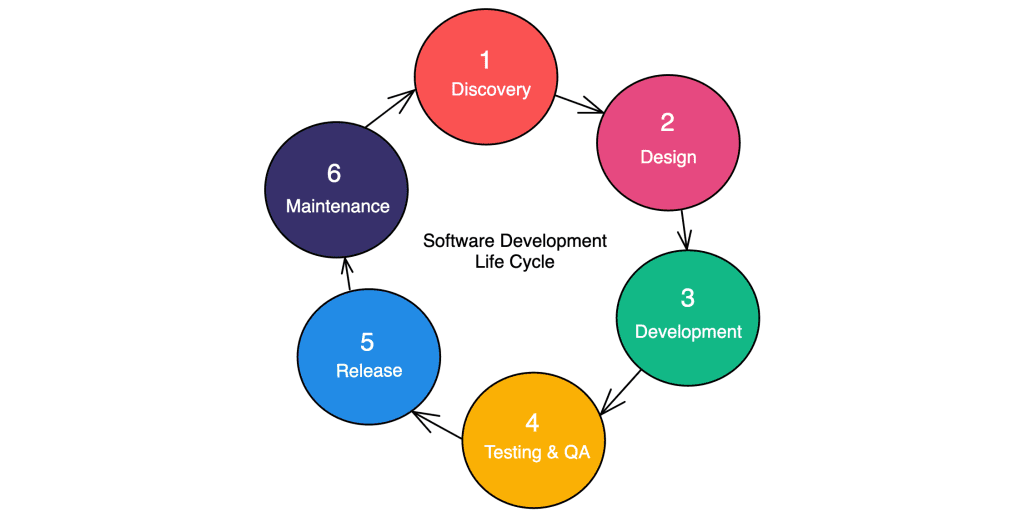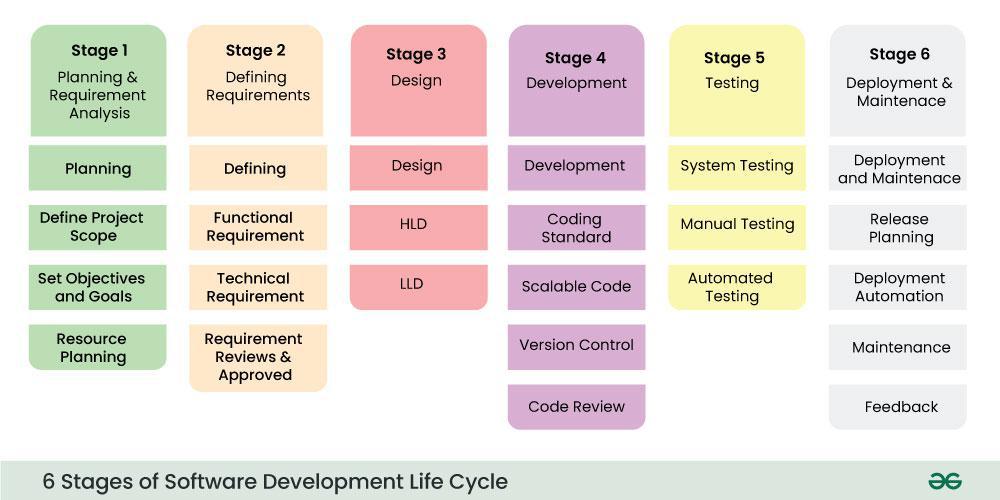Day-02: Streamlining DevOps Roles Through SDLC Pillars
 Vanshita
Vanshita
In the dynamic landscape of software development, the Software Development Life Cycle (SDLC) stands as a guiding framework for the journey from conceptualization to deployment. As DevOps principles continue to revolutionize the industry, understanding the intersection of SDLC and DevOps becomes imperative. This article delves into the impact of SDLC on DevOps roles, focusing on the pillars of planning, defining, designing, building, testing, and deploying, while spotlighting the crucial responsibilities of DevOps engineers within each phase.
Understanding SDLC and DevOps Integration
The integration of SDLC and DevOps is not just beneficial but essential for modern software development practices. By aligning SDLC phases with DevOps principles, organizations can achieve faster delivery cycles, improved product quality, and enhanced customer satisfaction.

Impact on DevOps Roles
1. Planning:
SDLC Perspective: In the planning phase, project requirements are gathered, feasibility studies conducted, and project timelines established.
DevOps Role: DevOps engineers collaborate with stakeholders to understand requirements, assess infrastructure needs, and establish deployment pipelines, ensuring that DevOps practices are integrated from the project's inception.
2. Defining:
SDLC Perspective: Requirements are documented, and system architecture is outlined in this phase.
DevOps Role: DevOps engineers work closely with developers to define infrastructure as code (IaC) requirements, establish version control practices, and define automated deployment strategies, ensuring that infrastructure provisioning is seamless and reproducible.
3. Designing:
SDLC Perspective: System architecture and design specifications are finalized, incorporating scalability and performance considerations.
DevOps Role: DevOps engineers collaborate with development teams to design scalable and resilient infrastructure architectures, implement monitoring and logging solutions, and establish disaster recovery mechanisms, ensuring that deployment environments are robust and reliable.
4. Building:
SDLC Perspective: Development of software code and infrastructure components takes place in this phase.
DevOps Role: DevOps engineers automate the build and deployment processes, implement continuous integration (CI) and continuous delivery (CD) pipelines, and integrate automated testing frameworks, ensuring that code changes are efficiently built, validated, and deployed to production environments.
5. Testing:
SDLC Perspective: Various testing activities, including unit testing, integration testing, and user acceptance testing, are performed to validate software quality.
DevOps Role: DevOps engineers collaborate with quality assurance (QA) teams to automate testing processes, integrate testing tools into CI/CD pipelines, and implement infrastructure as code (IaC) testing, ensuring that code changes are thoroughly tested and validated before deployment.
6. Deploying:
SDLC Perspective: Software is deployed to production environments, and post-deployment activities, such as user training and support, are conducted.
DevOps Role: DevOps engineers automate deployment processes, implement blue-green or canary deployment strategies, monitor production environments for performance and availability, and facilitate rollback procedures if necessary, ensuring that deployments are smooth and non-disruptive to end-users.

Key Pillars for DevOps Engineers in SDLC
1. Building:
Establishing CI/CD pipelines for automated build and deployment processes.
Implementing version control and release management practices.
Automating infrastructure provisioning and configuration management.
2. Testing:
Integrating automated testing frameworks into CI/CD pipelines.
Implementing infrastructure as code (IaC) testing to validate infrastructure changes.
Collaborating with QA teams to ensure comprehensive test coverage.
3. Deploying:
Automating deployment processes to production environments.
Implementing deployment strategies, such as blue-green or canary deployments.
Monitoring production environments for performance, availability, and security.
Conclusion
SDLC serves as the backbone of software development, while DevOps acts as the catalyst for rapid and reliable delivery. By aligning DevOps principles with SDLC phases, organizations can streamline their development processes, improve collaboration between teams, and accelerate time-to-market for their products. DevOps engineers play a pivotal role in this integration, leveraging automation, collaboration, and continuous improvement to drive efficiency and innovation throughout the software development lifecycle.
Subscribe to my newsletter
Read articles from Vanshita directly inside your inbox. Subscribe to the newsletter, and don't miss out.
Written by

Vanshita
Vanshita
Passionate frontend web developer and a cloud enthusiast with a drive for continuous learning and growth 🌐💻 Let's create innovative digital experiences together! ✨👩💻"